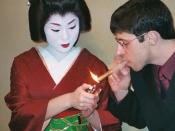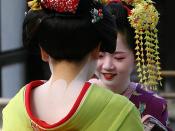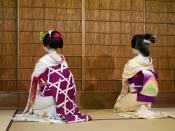The Japanese Geisha: A Surviving Female Force
Japan is a country filled with an incredible sense of diversity. The Japanese people have a storied past, and their unique traditions are ones that have enamored Westerners for hundreds of years. One aspect of the culture that sets it apart from others is its genuine high regard for women, and how this mindset has remained stagnant for centuries. Geisha are a clear representation of this mentality. Geisha act as the most paramount form of entertainment for the wealthy, their duties including (but not limited to): hostess, dancer, musician, singer, and conversationalist. Former geisha, Mineko Iwasaki, explains their significance:
The geisha system was founded, actually, to promote the independence and economic self-sufficiency of women. And that was its stated purpose, and it actually accomplished that quite admirably in Japanese society, where there were very few routes for women to achieve that sort of independence (Wieder, "Remaking a Memoir.").
Over the course of history, geisha have proven themselves to be a dominant female force-facing many hardships yet continuing to be an integral part of Japanese culture. Though there still remain some mysteries about this unusual lifestyle, new facts have emerged with time. By delving into their past, we gain insight into how adaptable these women truly are.
The emergence of geisha officially came about in the 1700s, but their most prominent predecessors were the Saburuko and the Shirabyoshi. Both groups of prostitutes emerged through social discourse and the changing of class systems, with the Saburuko dating back to the 7th century. The main difference between the two is that the Saburuko came from the lower class, while the Shirabyoshi were a product of wealthier Japanese citizens. Both groups were trained in the arts, specifically in dance and music. With the introduction of the...


